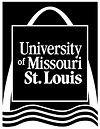HughesLab:Academic Analytics: Difference between revisions
No edit summary |
|||
| (4 intermediate revisions by the same user not shown) | |||
| Line 2: | Line 2: | ||
== | == Dynamics of collaborative science in a CTSA == | ||
[[Image:SciTM_Figure1.jpg|left|thumb|'''Figure 1''': [http://www.ncbi.nlm.nih.gov/pubmed/20944088 Hughes et al. (2011)]<br>Social Networking Analysis of the Institute for Translational Medicine and Therapeutics.]] | [[Image:SciTM_Figure1.jpg|left|thumb|'''Figure 1''': [http://www.ncbi.nlm.nih.gov/pubmed/20944088 Hughes et al. (2011)]<br>Social Networking Analysis of the Institute for Translational Medicine and Therapeutics.]] | ||
<p style="width:750px;"> | <p style="width:750px;"> | ||
To assess the growth and evolution of a major scientific enterprise, we automatically harvested every paper and grant proposal from the University of Pennsylvania's CTSA, the Institute for Translational Medicine and Therapeutics (ITMAT). We used these data to construct networks of interacting principal investigators, and measured their dynamics using Social Network Analysis (SNA). | |||
</p> | |||
<p style="width:750px;"> | <p style="width:750px;"> | ||
We found extensive growth in the frequency of collaborations within ITMAT over the course of its tenure. Most interestingly, this growth exceeded predictions based on the expansion of ITMAT's roster during this time, suggesting that ITMAT membership was itself responsible for the increasing rate of collaborative activity. This study was highlighted in [http://www.nature.com/news/2010/101013/full/news.2010.538.html Nature News]. | |||
</p> | </p> | ||
<br> | <br> | ||
<br> | |||
<br> | |||
<br> | |||
<br> | |||
---- | ---- | ||
[[Image:UMSL_logo.jpg|left|100px]] | [[Image:UMSL_logo.jpg|left|100px]] | ||
Revision as of 08:17, 6 August 2013
Home Lab Members Research JTK_Cycle MuscleDB Publications Protocols Academic Analytics Open Positions Contact
Dynamics of collaborative science in a CTSA

Social Networking Analysis of the Institute for Translational Medicine and Therapeutics.
To assess the growth and evolution of a major scientific enterprise, we automatically harvested every paper and grant proposal from the University of Pennsylvania's CTSA, the Institute for Translational Medicine and Therapeutics (ITMAT). We used these data to construct networks of interacting principal investigators, and measured their dynamics using Social Network Analysis (SNA).
We found extensive growth in the frequency of collaborations within ITMAT over the course of its tenure. Most interestingly, this growth exceeded predictions based on the expansion of ITMAT's roster during this time, suggesting that ITMAT membership was itself responsible for the increasing rate of collaborative activity. This study was highlighted in Nature News.

Hughes Lab
Department of Biology
University of Missouri, St. Louis
